Visual Art
Art and Technology Bring Leonardo Da Vinci To Life at Frost Science Museum
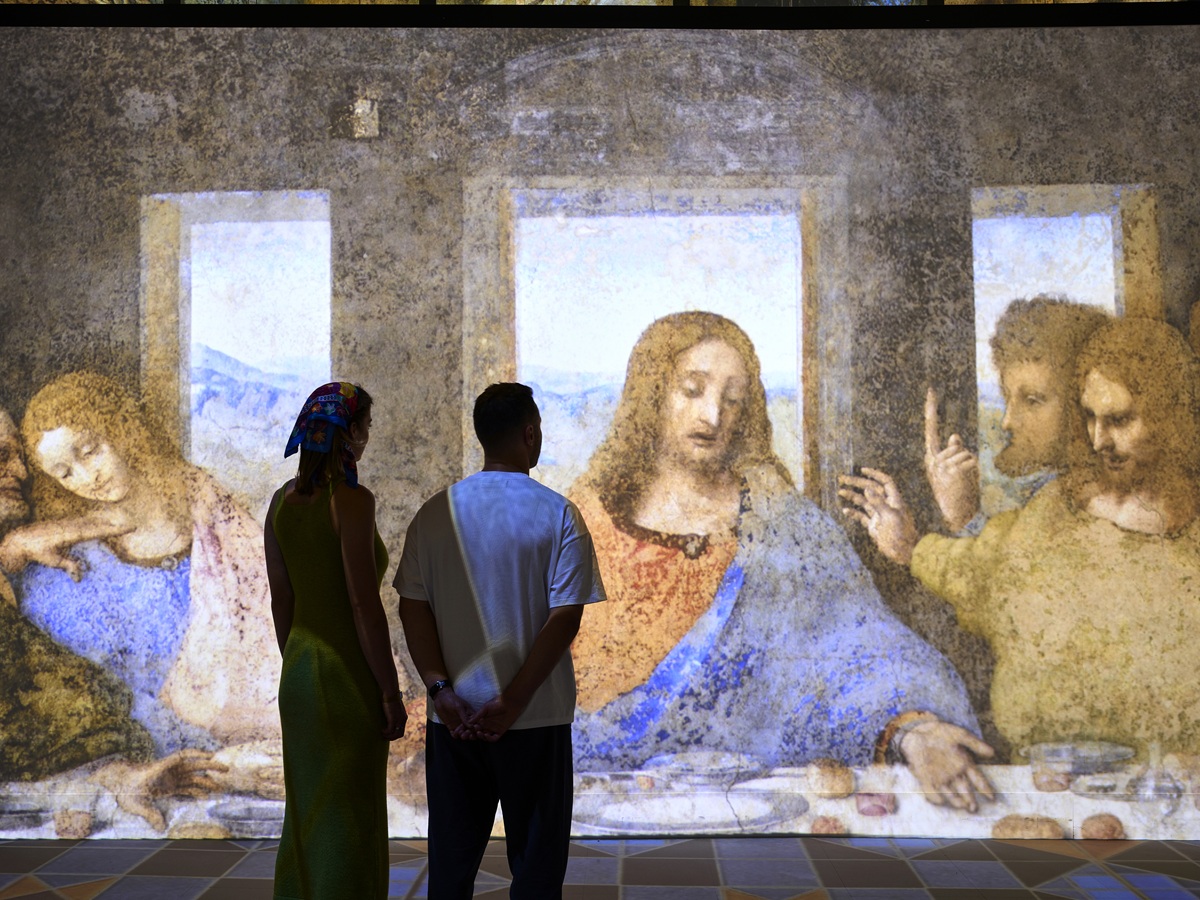
Masterpieces such as Leonardo Da Vinci’s “The Last Supper’ are explored in The Frost Science Museum’s “Leonardo – 500 Years of Genius” on view through Sunday, April 5. (Photo courtesy of Grande Experiences)
Few individuals have been able to blend artistry and science together as well as Leonardo Da Vinci. An artist as well as an architect, inventor, and philosopher, the Italian typified the idea of the “Renaissance Man,” helping to usher in an era of renewed interest in technology, discovery, and creativity at the close of the Middle Ages. Not only did Da Vinci produce some of the most famous and influential artworks of all time – the Mona Lisa, The Last Supper, the Vitruvian Man – he also devised flying machines, made comprehensive studies of human anatomy, and documented countless scientific observations.
“Leonardo – 500 Years of Genius,” the Frost Science Museum’ latest Da Vinci exhibition which opened on Saturday, Oct. 4, follows its last Da Vinci exhibition in 2018 with an updated, immersive presentation.
“I think what’s so unique about ‘500 Years of Genius’ is that it tells the story of Leonardo Da Vinci very beautifully,” says Analisa Duran, senior director of science education at Frost Science. The show is produced by Grande Experiences, an Australia-based company that has specialized in immersive experiences since 2011.
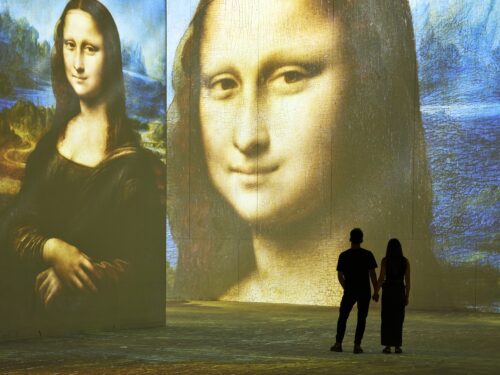
The “Mona Lisa Revealed” section of the exhibition uses imagery captured by special multi-spectral camera equipment. (Photo courtesy of Grande Experiences)
“It talks about his work in engineering, anatomy, as an artist, as a scientist, and it tells that story in an immersive way. And that’s very different from what we had before.”
Rob Kirk, head of touring experiences at Grande, says it’s the focus on storytelling that creates an emotional journey for the visitor.
“We very much take a curatorial approach.”
The exhibition is produced with assistance from the Museo Leonardo Da Vinci, a private institution headquartered in Rome at the Casa Poppolo. After analyzing the roughly 6,000 extant pages of Da Vinci’s notebooks in which he drew his many inventions, the Museo employed artisans to create physical replicas of many of Da Vinci’s conceptual machines, including flying machines and armored vehicles. These models, some of which are interactive, form about 50 percent of the exhibition, according to Kirk.
Technology also ups the ante on the exhibition experience.
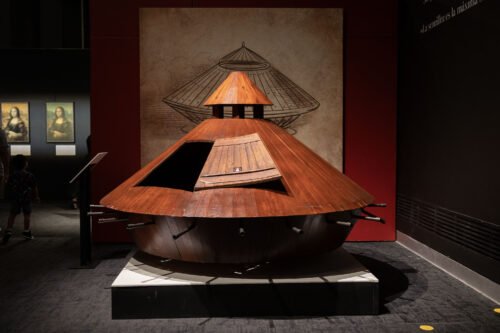
Full-scale replicas of many of Da Vinci’s concept designs for machines are on display, such as this armored vehicle. (Photo courtesy of Frost Science Museum)
Much in the way Da Vinci lived at a time of significant scientific progress and disruption, the producers of “Leonardo” are using new innovations to deepen their explorations of the master’s work. Along with the Museo Da Vinci, Grande established an exclusive partnership with Pascal Cotte, a French scientist who made a multi-decade study of the “Mona Lisa” after the Louvre Museum invited him to make scans of the painting in 2004.
Using a special multi-spectral camera to analyze the artwork, Cotte’s imagery reveals unprecedented hidden details beneath the painting’s surface, such as a previously unknown sketch the artist drew prior to finishing the painting.
The images form the backbone of “Mona Lisa Revealed,” a section of the show dedicated to the famous painting. Projected onto walls, they display the hidden layers and details uncovered by Cotte on a large scale. It may be a better way to experience the Mona Lisa than actually visiting the Louvre, where one must fight with crowds just to glimpse the small, dark painting behind bulletproof glass.
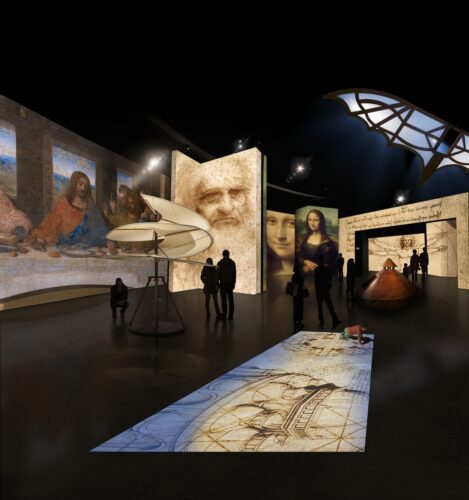
Many displays at the Da Vinci exhibition are interactive. (Photo courtesy of Grand Experiences)
Other experiences in the show, which is broken into 16 sections that each explore one of Da Vinci’s many disciplines, include a large-scale projection of The Last Supper; a Vitruvian Man display where one can compare their own form to the famous anatomical sketch; and blow-ups of the polymath’s famously detailed sketchbooks.
The show arrives at a time in which the market for immersive exhibitions has exploded, with everything from sophisticated digital art displays from legitimate organizations like teamLab to more pedestrian shows that focus on projection-mapping.
Kirk admits that the genre has been somewhat diluted by the boom.
“It’s the reason why we’ve been kind of very careful about selecting who and where we work with in the presentation of our experiences, because there isn’t (anything) stopping anyone from renting a space downtown and turning it into what they perceive to be an immersive experience.”
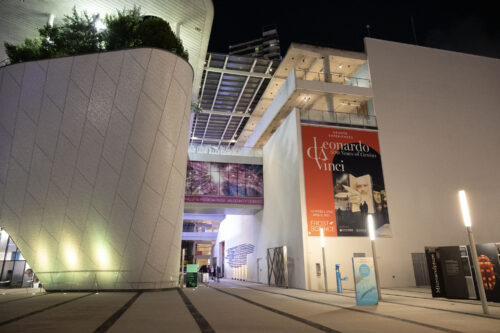
Miami’s Frost Science Museum’s “Leonardo – 500 Years of Genius” is on display through Sunday, April 5, 2026. (Photo courtesy of Frost Science Museum)
The full-scale physicality and digital innovation of “500 Years of Genius” presents a mix of art and science. More than most other artists, Da Vinci’s work is perfectly compatible with the Frost Museum of Science.
WHAT: “Leonardo: 500 Years of Genius”
WHEN: 10 a.m. to 5 p.m. Monday through Thursday; 10 a.m. to 6 p.m. Friday through Sunday. Through Sunday, April 5, 2026.
WHERE: Philip and Patricia Frost Museum of Science, 1101 Biscayne Blvd., Miami
COST: $34.95 and $29.95, ; $26.95 and $24.95, ages four to 11, admission free for children 3 and younger. Free admission for museum members.
INFORMATION: (305) 434-9600 or frostscience.org.
ArtburstMiami.com is a nonprofit media source for the arts featuring fresh and original stories by writers dedicated to theater, dance, visual arts, film, music, and more. Don’t miss a story at www.artburstmiami.com.
